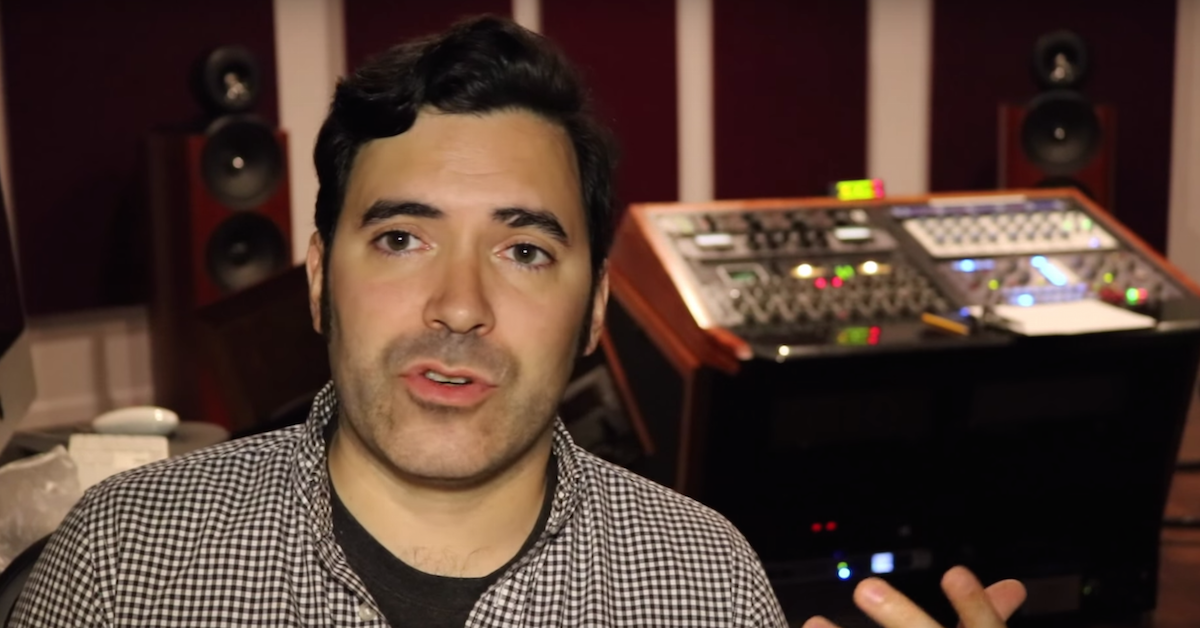How Mick Guzauski Mixed Daft Punk
Article Content
I love Pensado’s Place and I love the new Daft Punk album, so I couldn’t resist sharing this with you. I’ll be honest, I hadn’t heard of Mick Guzauski. But after briefly researching some of his work, I realize I should have. And now I do.
Mick has worked with artists like Earth, Wind and Fire, Eric Clapton, Mariah Carey, Baby Face, Boyz to Men, Daft Punk and many others. He recently joined Dave and Herb to talk about his mixing and tracking work on Daft Punk’s “Random Access Memories,” as well as his work on classic albums by Mariah Carey and Eric Clapton.
Daft Punk worked on this album with Mick for over two years. According to Mick, Daft punk was working on the material another two years before that. The album is inspired by late-seventies disco, but without the 80’s sounds (thank you) and with a modern approach to the production.
Fun fact from Dave Pensado: Between 1977 and 1979, thirty of the thirty eight number one singles were disco records.
Below is the full Pensado’s Place (interview starts at 10:15), an embed of Get Lucky + analysis, as well as some extracted highlights from the interview for all you busy-bees.
Tracking the album:
We tracked to Pro Tools at 96 kHz. We also tracked the drums, bass and keyboards to analog 24-track. Then we transferred all the analog recordings to Pro Tools so we could have the direct digital tracks alongside the analog tracks, allowing us to edit and work with both streams of information. Then, in the mix, we decided song-by-song — section-by-section sometimes — whether the softer and rounder bottom of the analog fit best, or the clarity of digital fit best.
We mixed to half-inch tape at both 15 and 30 ips, and then decided song-by-song which to use. We also did several passes of automation at different levels to see which level of saturation would sound best.
ADVERTISEMENT
Get Lucky is the first and only single Daft Punk released ahead of their album, “Random Access Memories,” set to release May 21st. They teamed up with Pharrell, who sings lead on the track. The legendary John Robinson plays drums on it alongside Nile Rodgers on guitar. Pocket, anyone?
The song was recorded digitally but processed with analog outboard gear. Here’s the nitty-gritty on Get Lucky:
Vocal chain:
We used the Neve 88R console EQ, an LA2A, and a DBX-902 De-esser. For effects, we used a real EMT 140 plate, a Lexicion PCM42 digital delay in front of that for pre-delay, and then another PCM 42 for a slight slap echo that is chorused a bit and hidden behind everything.
Background vocals:
For the background vocals, I used the 88R console EQ’s and an 1176 — plus de-essers as needed. In some cases, I used the old harmonizer trick: one side pitched down a few cents, one side pitched up a few cents, and then mixed across: right feeding left, left feeding right.
Kick Drum/Bass:
Since I did the drum tracking, we set it up so the kicks could be matched to the bass. Normally I might do this with EQ, but we used four mics to track the kick: A D112 is the main one we use, a Sony C500 — an old sony condenser that’s great for high SPL (placed close to D112) for the tick of the beater/edge of the kick, a 47 FAT outside which was later phase aligned to the other mics, and then a woofer from an NS-10 just for a little tone. For different songs we used different combinations of those mics to mix with the bass. The bass was compressed with an LA2a.
Claps:
The claps were recorded live with four people, and captured by a U67 or U87 about 8 feet away. The phrase is looped.
Desert Island Batter’s Box:
- Compressor: Distressor and Euphonix channel strip
- EQ: Avalon 2055 or similar. Sonnox for top end and FabFilter for versatility
- Microphone: Neumann U67
- Reverb: A real EMT 140 plate or Universal Audio’s EMT 140/EMT 250
- Delay: Anything.
- De-esser: Universal Audio or FabFilter, and if outboard gear, a DBX-902
- Cheapest gear used on #1 record: Yamaha SPX900
- Chorus/Flanger: Eventide DSP4000 or MetaFlanger
I’ll leave you with my favorite song on the album:
Or you can let Nile Rodgers and Chic take you out…
If you enjoyed this post, please share it! For more, check out this interview from SonicScoop.





